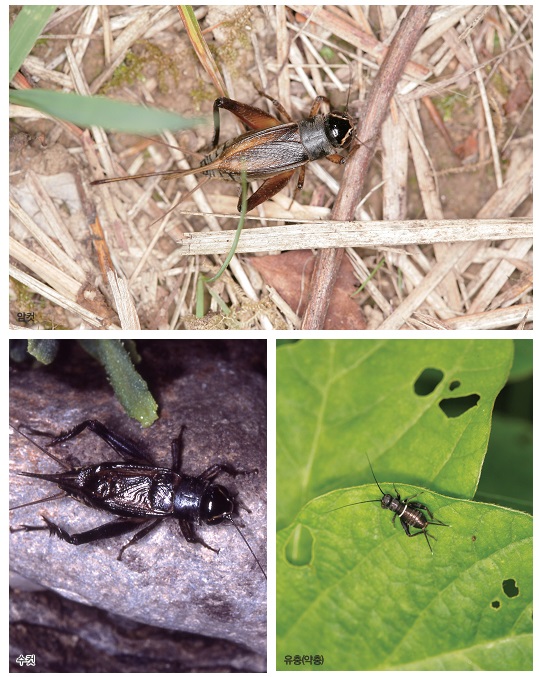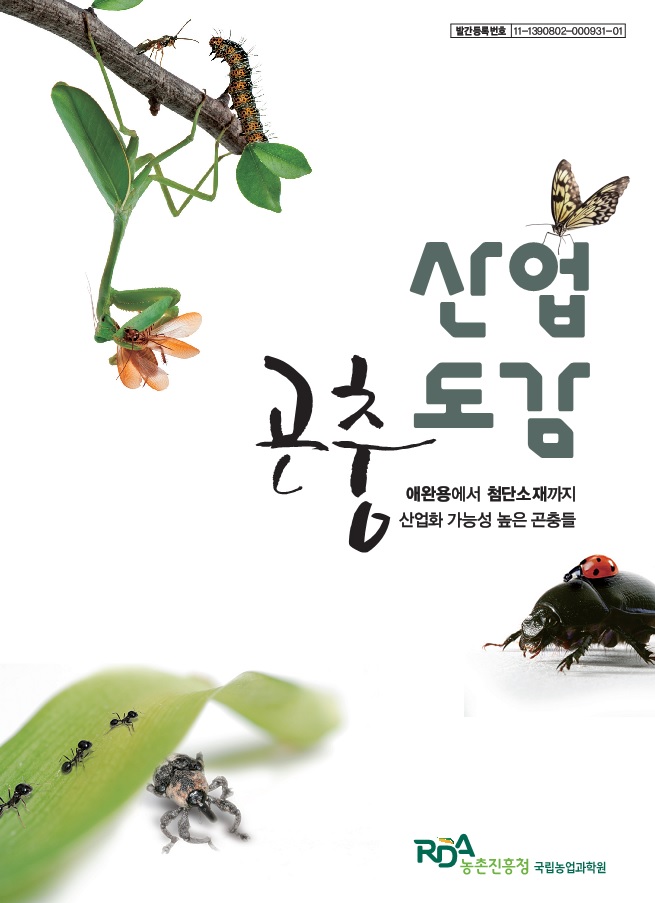A new photo book about insects and spiders was recently published by the Rural Development Administration. It provides basic information about each bug and any potential high-tech industrial uses the animals may have.
Previously, there were books about feeding standards and the sizes of insects and spiders, but this is the first of its kind that arranges the information in a systematic manner. The publishers say there has been a constant demand for this type of book.
The photo book introduces a total of 148 species of insect, including 139 species of hexapods belonging to ten orders and 67 families, eight species of arachnids belonging to two orders and five families, and one species of centipede grouped into one order and one family.
Among them are species that can be fed en masse and used for industrial purpose, species that are already being skillfully used, species that have a high possibility of being mass produced, species that have been used for industrial purposes during several past periods of time and, finally, species that have intermittently been traded.


This photo book consists of three sections: the understanding of the insects and spiders, the usage of the insects and spiders, and the appendix. Divided into eight categories, the "usage" section introduces bugs that serve different functions. There are species that have connections with edible plants, that can protect edible plants, trees and animals, that can produce useful substances and those that can be used for medicinal purposes or as feedstuff. DNA information of the insects and spiders can be seen through QR codes, too.
The book also offers tips on how to secure sporozoites for effective feeding, how to check an animal's original species and more. It's expected to be used by those working in the areas of insects and spiders, by those who feed them or those who like to study them. The photo book is available as a PDF at the Agricultural Science Library, part of the RDA (lib.rda.go.kr).
By Lee Seung-ah
Korea.net Staff Writer
slee27@korea.kr

Previously, there were books about feeding standards and the sizes of insects and spiders, but this is the first of its kind that arranges the information in a systematic manner. The publishers say there has been a constant demand for this type of book.
The photo book introduces a total of 148 species of insect, including 139 species of hexapods belonging to ten orders and 67 families, eight species of arachnids belonging to two orders and five families, and one species of centipede grouped into one order and one family.
Among them are species that can be fed en masse and used for industrial purpose, species that are already being skillfully used, species that have a high possibility of being mass produced, species that have been used for industrial purposes during several past periods of time and, finally, species that have intermittently been traded.

Pictured is the Oriental garden cricket, one of the species under active investigation concerning its mass-feeding.

Attempts to feed the great green bush-cricket have recently been on the rise among its fans.
This photo book consists of three sections: the understanding of the insects and spiders, the usage of the insects and spiders, and the appendix. Divided into eight categories, the "usage" section introduces bugs that serve different functions. There are species that have connections with edible plants, that can protect edible plants, trees and animals, that can produce useful substances and those that can be used for medicinal purposes or as feedstuff. DNA information of the insects and spiders can be seen through QR codes, too.
The book also offers tips on how to secure sporozoites for effective feeding, how to check an animal's original species and more. It's expected to be used by those working in the areas of insects and spiders, by those who feed them or those who like to study them. The photo book is available as a PDF at the Agricultural Science Library, part of the RDA (lib.rda.go.kr).
By Lee Seung-ah
Korea.net Staff Writer
slee27@korea.kr

A newly produced photo book offers clear information about insects and spiders, and their industrial potential.
Most popular
- Slew of festivals, events scheduled in downtown Seoul in May
- Actor Tom Cruise proves 'love for Korea' with 12th visit
- Netflix releases official trailer for final season of 'Squid Game'
- Jeju Island completes prep to host series of APEC meetings
- Korea Day celebrated at Osaka-Kansai World Expo in Japan
